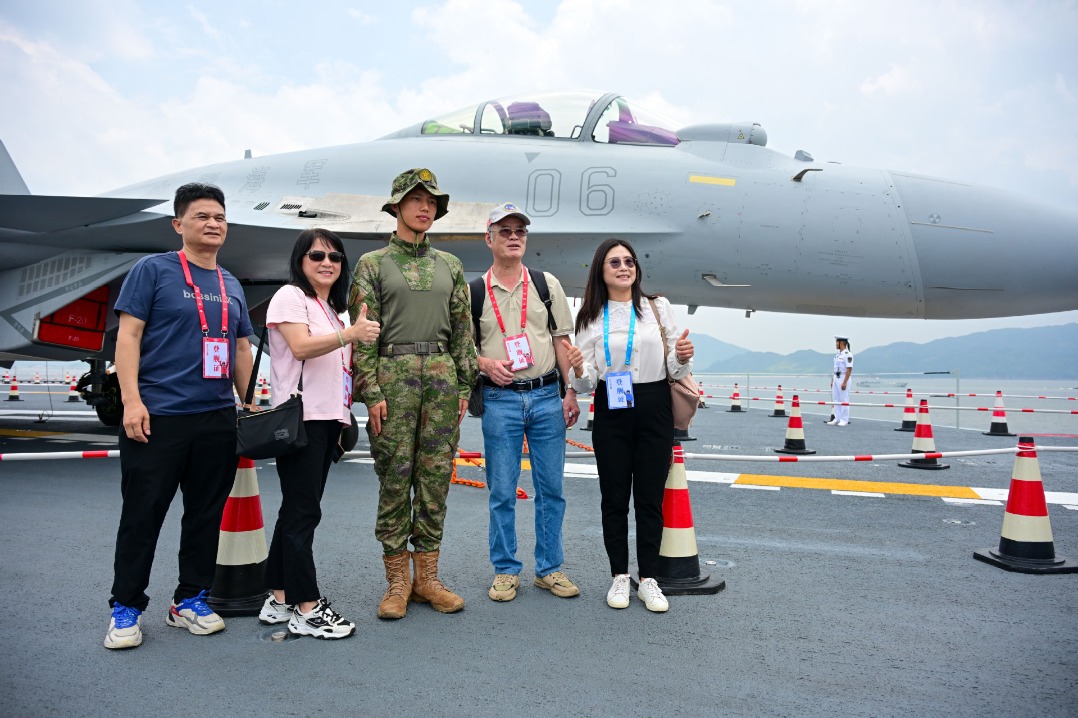Supply-side reform set to safeguard future

 |
| An employee works in a facility for the manufacturer of lasers in Tangshan, Hebei province. [Photo/Xinhua] |
Transformation
These achievements are a result of the campaign to transform the nation's SOEs, whose combined assets surpass 150 trillion yuan ($22.66 trillion)-double China's annual GDP.
The central government has actively restructured State-owned Enterprises in a bid to improve efficiency and competitiveness. The move has seen the number fall to 98 from 117 five years ago.
Li Jin, chief researcher at the China Enterprise Research Institute in Beijing, said the reform will cut unprofitable "zombie" companies, reduce excessive capacity and improve administration.
"Zombies" are economically unviable businesses, usually in sectors with severe overcapacity, kept alive via aid from the government and banks.
"A modern corporate system, which separates government administration from business operations, will allow SOEs to function as efficiently as other businesses," Li said.
Nie Huihua, an economics professor at Renmin University of China in Beijing, was blunt: "Unsuccessful action against zombie companies poses a major threat to China's economic structure. So China is resorting to SOE mergers to create more global powerhouses and avoid cutthroat competition, in addition to restructuring redundant industries to aid supply-side structural reform."
Sinochem, a State-owned conglomerate involved in energy, agriculture, chemicals, real estate and financial services, is an example of how unprofitable companies are being slashed to boost efficiency.
"The group has closed 56 departments and lowered the head count at its headquarters by 32 percent since the reform started," said Ning Gaoning, the chairman.
The reduction of excess capacity and rapid responses to the market reaction are key parts of the reform, he added.
Between January and August, Sinochem generated net income of more than 10 billion yuan, a company record, from its fast-growing businesses in fertilizers, seeds, pesticides and new materials, both at home and overseas.
China Eastern Airlines has also joined the first batch of SOE pilot reforms, and is experimenting in mixed ownership by making 2.25 billion shares in a subsidiary, Eastern Airlines Logistics, available to institutional investors.
China Eastern holds 45 percent of the shares, while Legend Holdings holds 25 percent, Global Logistic Properties has 10 percent and Deppon Logistics holds 5 percent.
According to the 36th meeting of the Central Leading Group for Deepening Overall Reform in June, the government will completely restructure the country's SOEs by the end of the year to further reduce operating costs.
Reducing overcapacity
Concerted efforts have also been made to reduce overcapacity in sectors such as coal, cement and glass. In the coal industry, the government has closed obsolete facilities and is exploring ways to upgrade technologies.
From January to August, centrally administered SOEs in the three sectors beat government targets, especially in the coal industry where capacity was reduced by more than 55 million metric tons, said Xiao Yaqing, minister of the State-owned Assets Supervision and Administration Commission.
The National Energy Administration plans to cut coal production by 150 million tons this year, an 83 percent reduction from last year's target of 250 million tons, which saw output fall to 2.3 billion tons, more than 11 percent lower than in 2015, according to data from the China National Coal Association.
Li Wei, general manager of Yankuang Group, the largest State-owned coal company in Shandong province, said the company has closed an outdated coal mine and an old aluminum plant.
"Thanks to the measures, the combined losses shrank by 1.6 billion yuan in the first nine months of the year," he said.
"We aim to build the company into a first-rate high-efficiency supplier of clean energy. Clean technologies will help the industry to achieve green and sustainable development."
However, Shi Yong, vice-president of the China Machinery Industry Information Research Institute in Beijing, warned that a number of core links in the country's industrial chain are missing, such as integrated circuits and industrial system solutions, which is preventing the manufacturing sector from achieving high-end production.
Shi said it is essential for the country to ensure that it has complete and functional industrial, innovation and financial chains, supported by big data analysis, cloud computing, online platforms and business-friendly innovations.
























